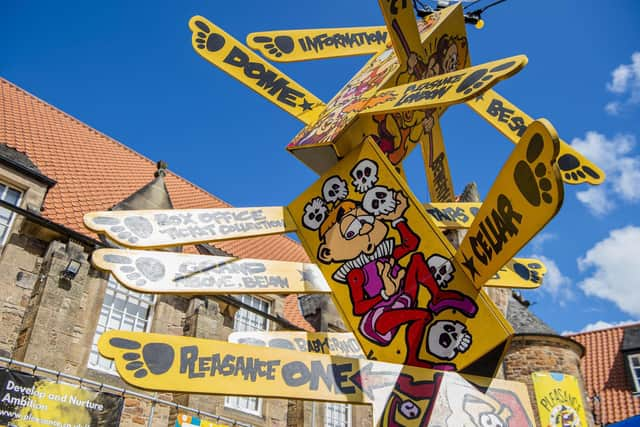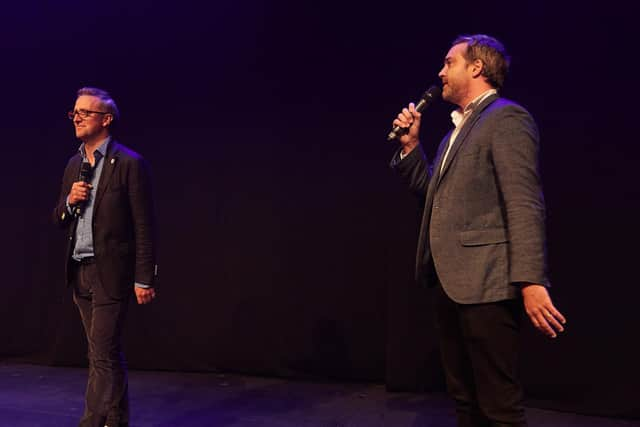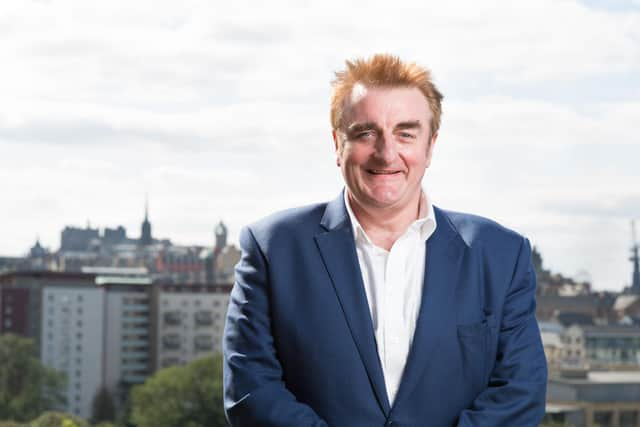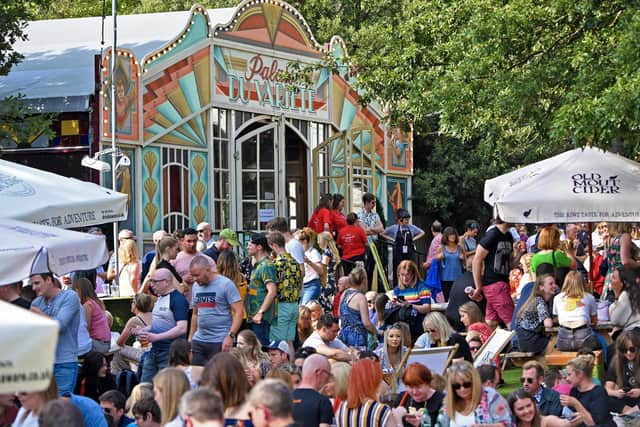Highs and lows of 75 years of Edinburgh’s festivals charted in new book
Now a new book charting the complete history of Edinburgh's festivals is set to be launched during its 75th anniversary season.
Key players have recalled their earliest days working in tiny venues, performing before a handful of punters and battling against the odds to ensure shows went ahead.
Advertisement
Hide AdAdvertisement
Hide AdCritic David Pollock’s book - Edinburgh Festival: A Biography - charts the evolution of key events and venues, recounts the biggest controversies on and off-stage, and recalls the most memorable scandals to make the press.
First-time appearances in Edinburgh by Andrew Lloyd Webber, Sir Ian McKellen, Phoebe Waller-Bridge, Rowan Atkinson, Hugh Grant, Steve Coogan, Rik Mayall, Miriam Margoyles, Craig Ferguson, John Cleese, Mike Myers, Woody Allen and Martin Scorsese are among those recalled in the book, published by Luath Press.
Key episodes featured include the hugely-controversial forerunner of the book festival, which was staged at the McEwan Hall in 1962, the birth of the Traverse Theatre the following year, Billy Connolly’s Great Northern Wellyboot Show in 1972, and the National Theatre of Scotland’s first Fringe show, Black Watch, which went on to be staged around the world after its launch in 2006.
Christopher Richardson, the founder of the Pleasance, recalls his first involvement in the Fringe when he helped create a new pop-up venue, the Wireworks, off the Royal Mile for Rowan Atkinson in 1979.
He said: “I’d never been to Edinburgh before, but I went up because I’d offered to help Rowan build a staircase.


“It was this vast space which went all the way from the High Street right the way down to the Cowgate. You went in and there were no floors, but at the bottom there was a huge pile of scaffold.
"There was a hole in the roof, so water would pour in all day. There was a puddle on the stage at the bottom, and Rowan would try to work out how to do his sketch show on the puddle – the whole thing was completely mad.”
Advertisement
Hide AdAdvertisement
Hide AdLinda Myles, the first woman to take charge of the film festival, in 1973, said: ‘We had no money to take people out for meals, so during the festival I would invite 20 people round to my flat and somebody would cook for a filmmaker.
“It was hand to mouth, but with fewer bureaucratic restrictions that one might have had. And the stories from the parties entered folkloric dimensions.


“The Commonwealth Pool had just opened and somebody on our staff persuaded them to let us use it for the party.
"The deal was that nobody could go in, and idiotically the invitation said ‘don’t bring swimming costumes because we can’t go in the water’. So of course, come midnight, about 50 naked people jumped in.”
William Burdett-Coutts, who would turn the Assembly Rooms, the former social hub for the International Festival, into one of the best-known Fringe venues, recalled putting on shows at the Harry Younger Hall, off the Royal Mile.
He said: “We didn’t really know what we were doing and we had to invent it as we went along. I hadn’t heard about licensing before we started. I lost the keys for the venue, and I had to sleep there overnight so we didn’t get broken into. It’s one of those classic Fringe stories – sleep in the venue, act in a play, direct a play, sell the tickets, clean the toilets. Perfect Fringe training.”


The book recalls the impact made by the Stand Comedy Club, which although now based on York Place, was founded by Tommy Sheppard and Jane Mackay in 1995 at West Port pub WJ Christie’s, a partnership which ended in disarray at the end of the 1997 Fringe when Sheppard and its new manager fell out spectacularly.
Advertisement
Hide AdAdvertisement
Hide AdHe says: “He would close the bar during performances, there was constant tension.
"Anyway, it breaks out into a stand-up shouting match, with him trying to come in the back door into the venue and me standing blocking him because there’s a show on, and eventually both of us tumbling through the curtain into the audience.
"The next morning we took our kit away and I realise that if there’s to be any future in this we have to secure our own premises.”
Judith Doherty’s theatre company Grid Iron made its name with The Bloody Chamber, a show staged in the reputedly-haunted haunted Mary King’s Close, off the Royal Mile in 1997.
She said: “Whether you believe the stories or not, Mary King’s Close is a freaky place to be, and we had some spooky experiences in there. I was all prepared to make them up for a press release, but I didn’t have to. Things moved inexplicably.


“When you’re doing site theatre work you try and do as little as possible to the space, and Edinburgh’s just a gift for that.”
Grid Iron returned to the Fringe the following year with a new show, Gargantua, staged in another hidden space, which it named the “Underbelly” beneath the Central Library on George IV Bridge.
Advertisement
Hide AdAdvertisement
Hide AdTaken on by two regular Fringe participants, Charlie Wood and Ed Bartlam, it would go on to become one of the Fringe’s best-known venues, where both Eddie Redmayne and Phoebe Waller-Bridge performed as unknowns.
Recalling their first season of shows in 2000, Bartlam says: “Our license came through three or four days late. We built a bar out of bookshelves we found in there. The library was using it as a storeroom.
"In a brilliantly Fringy way it was very ramshackle, just beg, borrow and steal as much as we could to put the shows on.”
Recalling Underbelly’s expansion into an upside-down cow-shaped venue in 2006, Bartlam added: “The company we got to build it got loads of stuff wrong, it was very close to the wire. Everyone thought we were mad, it made people smile.”
Comments
Want to join the conversation? Please or to comment on this article.
